[raw bean file] Solar treatment in Uganda Kapkwai,Sipi Falls treatment Plant
raw bean file| Royal Coffee analysis:
Sipi Falls Treatment Plant, Kapkwai, Uganda
Solarization (No. CJ1124)
01 |profile
by Chris Kornman
This sun-cured Ugandan is grown on the northern slopes of the Elgon Mountains by retail coffee farmers. The steep cliffs of Mount Elgon divide Kenya and Uganda almost evenly. The microclimate here provides excellent conditions for coffee growth and for the Sipi Falls coffee processing plant. Sipi Falls is a local central washing plant capable of processing freshly picked coffee berries and further drying them, providing additional convenience and conditions for local coffee farmers.
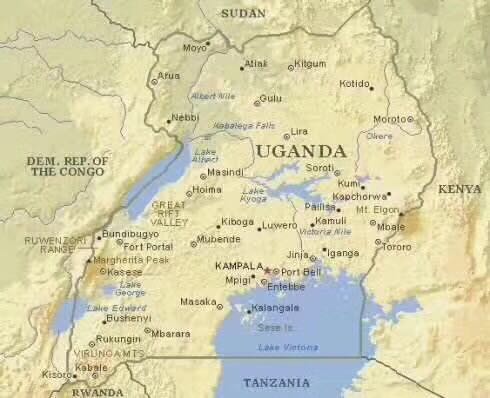
Coffee farmers in this area are mostly retail, with home-style coffee processing habits because they feel it saves them money. Kawacom, the exporter and owner of the Sipi Falls processing plant, has long tried to educate local farmers about how coffee processing plants can help them improve the quality of coffee processing and save time, which in turn can lead to higher incomes, encouraging local farmers to send their harvested coffee to the central processing plant for more professional washing, fermentation and drying. They have also set up experimental breeding centres to develop higher-quality coffee varieties and provide agricultural support and assistance to local farmers, many of whom are mainly women.
This microbatch is one of the few coffee processed in the sun at the plant. After the coffee is picked, it is directly dried in the sun. Because the pulp is retained, the aroma of coffee fruit is retained to the maximum extent. Prior to solarization, immature coffee cherries were screened only by fluting in a sink. The coffee is then placed on a drying rack for sun treatment. The drying rack allows air to circulate effectively, and the worker needs to turn the coffee fruit repeatedly to ensure that all coffee fruits are evenly dried.
02 |green bean analysis
by Chris Kornman
Compared with honey treatment, this sun-treated coffee has slightly larger particles and slightly lower density and moisture content. Each coffee from this plant can be considered a high-quality processed coffee, exhibiting characteristics superior to those of other coffees, and regardless of the process used, the beans here can be considered the best coffee in East Africa.
The varieties included Scott Labs Select 14 (the most common variety in Uganda) and 28 (SL14, SL28), both descended from French missionary Bourbon. SL14 is resistant and drought-tolerant, while SL28 is more common in Kenya. Another variety is the Jamaica Blue Mountain, a descendant of another Arabica variety, the iron pickup, which many people think came to Uganda from Jamaica. In fact, the Jamaica Blue Mountain entered Africa through Kenya in 1913.
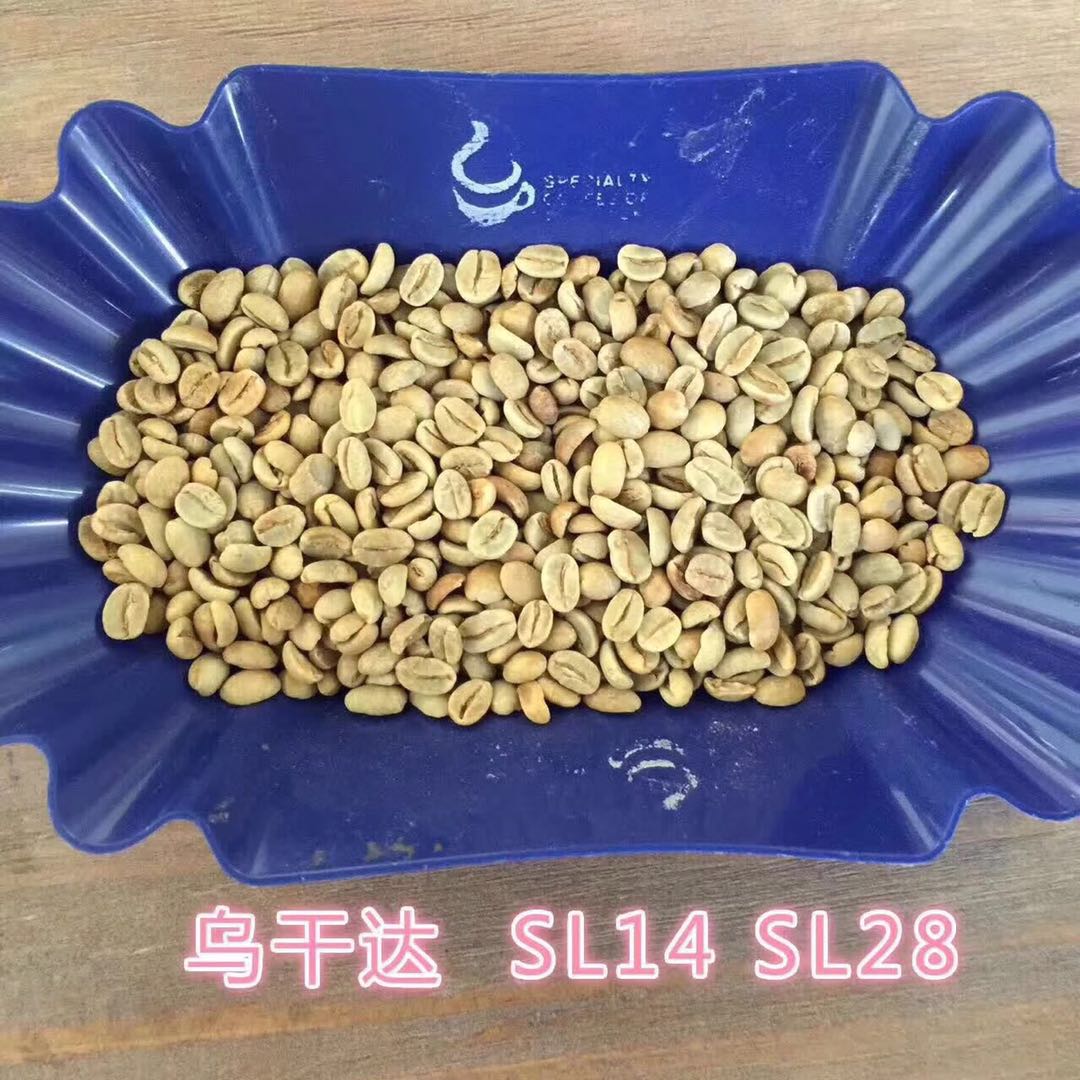
03 |baking analysis
Written by Jen Apodaca
This coffee has smaller particles and higher density, and it absorbs more heat during roasting. The Mena reaction process is also faster. In the first batch of roasting, I served the beans at a high temperature, and kept applying heat until the beans were dehydrated and browned to ensure that there was enough heat to last until the end of the roasting. In the second batch, I changed the technique, reducing the overall speed, the temperature of the beans was slightly lower, the heat was relatively low, and the heat was gradually increased as needed during the baking process. Under this method, the dehydration time of coffee is longer than that of the first batch, and the heating rate is 13-10 degrees Fahrenheit every 30 seconds.
Roast one: Grape candy, raspberry, vanilla, honeydew, juicy
Baked batch one: glucose fruit, raspberry, vanilla, honey, juice
Roast two: Watermelon, concord grape, cacao nibs, citrus juicy
Baking Lot 2: Watermelon, Concord Grape, Cocoa Bean, Citrus Juice
04 |Baked data using Behmor
by Evan Gilman
This sun-cured Ugandan coffee roasts very well with Behmor, without the rapid temperature spike that many sun-cured beans experience after popping. Although this phenomenon often occurs when Jen uses Probatino, it does not appear on Behmor. Compared with the washed coffee, the batch cracking time and roasting time of the sun-treated coffee are slower, while the color difference between the bean surface and the bean core is larger. All the data shows that this coffee roasts very evenly. I don't know which other bean can perform as well with Behmor as this bean.
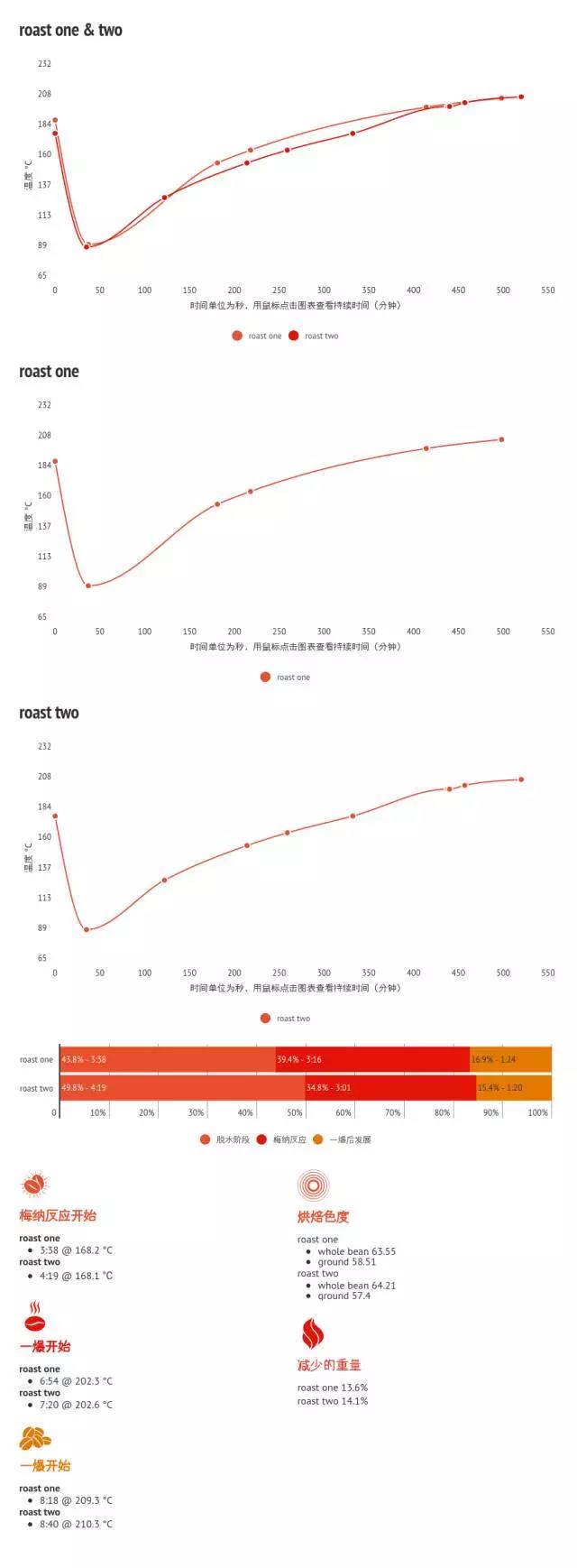
05 |brewing analysis
by Chris Kornman
To ensure stability, I tested it a week after baking. The test was brewed using Chemex, 40 grams of coffee powder, 80 ml of water pre-soaked for 60 seconds, water to powder ratio 16:1, two baking batches brewed simultaneously, 50 grams of water on each side of an exchange. Both batches taste good, the first batch is more fruity, the second batch is more balanced and sweeter, but both the first and second batches taste clean, showing only obvious fruity flavors. By increasing the TDS or extraction rate, the coffee will appear fruity and have a wine feel. If you don't want to highlight this fruity style, then I think Chemex is the best brewing option.
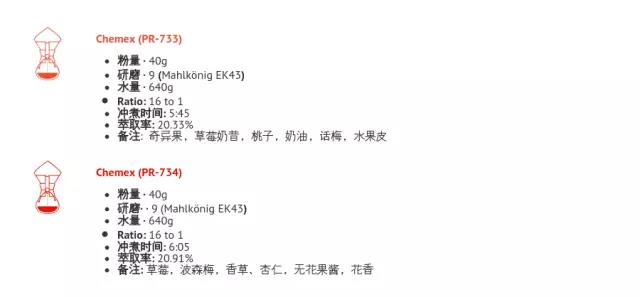
Important Notice :
前街咖啡 FrontStreet Coffee has moved to new addredd:
FrontStreet Coffee Address: 315,Donghua East Road,GuangZhou
Tel:020 38364473
- Prev
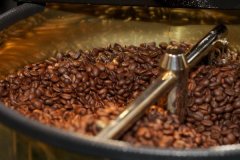
Colombia Huilan boutique coffee bean tasting knowledge popularization
Colombia huila, Colombia: located in the southwest of Colombia, it is one of the major coffee growing areas. Because there are famous coffee cultivation places in Huilan area, the names of small areas become brand names and circulate. Although the cultivation conditions in this area are also very good, the cultivation infrastructure of coffee cultivation farm and surrounding conditions is not yet available.
- Next
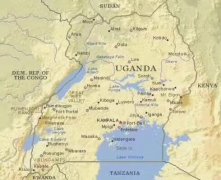
Introduction of Uganda production area, raw bean analysis, baking skills and cooking analysis
Raw bean file | Royal Coffee Coffee Analysis: Uganda Kapkwai,Sipi Falls processing Plant Solar treatment (Ref: CJ1124) 01 | A brief introduction to the author Chris Kornman this sun-treated Uganda is grown on the northern slope of Elgon Mountain and is grown by retail coffee farmers. The steep rock face of Elgon Mountain almost separates Kenya and Uganda.
Related
- Detailed explanation of Jadeite planting Land in Panamanian Jadeite Manor introduction to the grading system of Jadeite competitive bidding, Red bid, Green bid and Rose Summer
- Story of Coffee planting in Brenka region of Costa Rica Stonehenge Manor anaerobic heavy honey treatment of flavor mouth
- What's on the barrel of Blue Mountain Coffee beans?
- Can American coffee also pull flowers? How to use hot American style to pull out a good-looking pattern?
- Can you make a cold extract with coffee beans? What is the right proportion for cold-extracted coffee formula?
- Indonesian PWN Gold Mandrine Coffee Origin Features Flavor How to Chong? Mandolin coffee is American.
- A brief introduction to the flavor characteristics of Brazilian yellow bourbon coffee beans
- What is the effect of different water quality on the flavor of cold-extracted coffee? What kind of water is best for brewing coffee?
- Why do you think of Rose Summer whenever you mention Panamanian coffee?
- Introduction to the characteristics of authentic blue mountain coffee bean producing areas? What is the CIB Coffee Authority in Jamaica?

